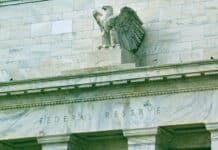
In a market where risks have risen, diversifying within asset classes, particularly defensive asset classes, is just as important as having a sound mix of growth and defensive assets, writes Justin Tyler, Director, Daintree Capital.
Diversification is a central strategy used by asset allocators to lower a portfolio’s risk and enable more stable returns.
Many investors have a superficial understanding of diversification, believing a portfolio is diversified if it has a good balance between growth and defensive assets. However, there is often little thought given to diversification within an asset class, least of all fixed income.
During the COVID-19 crisis, traditional defensive assets have provided some protection, but to a lesser degree than past crashes. This raises the question as to how investors can build more resilient portfolios in the era of COVID-19 and beyond.
Types of fixed income
Fixed income is an extremely broad and diverse asset class. The corporate bond sector alone comprises assets of varying credit quality including high-yield bonds, investment-grade bonds, subordinated bonds, and more.
Each of these sectors has a very different risk and return profile and blending different types of fixed income, along with cash, can provide opportunities for investors across the full market cycle.
To create a portfolio that is truly defensive, asset allocators need to combine assets carefully. Relying on a negative correlation to equity markets can be problematic as government bonds have become more positively correlated with equities in recent times.
For example, in 2018, the expectation of rising inflation and higher rates in the US caused global equity and bond markets to sell off in unison. In 2019, bond markets rose in anticipation of central bank rate cuts, while equity markets continued their bull run. We expect such outcomes to become more frequent, making the selection of reliable fixed income investments more difficult for investors.
The defensive characteristics of bonds are therefore less reliable than in the past and historically expensive.
It is challenging for individual investors to build a well-diversified portfolio. They often lack the necessary capital and research skills to put together a portfolio that is truly diversified and can withstand tough market conditions.
Bond investors who tend to be most undercompensated for credit risk are often those who try to build their own portfolios of individual securities. In the low-interest rate, low yielding environment we are seeing, investors may be tempted to invest in high-yielding bonds without sufficient knowledge of the credit risk they are taking on.
As an example, Virgin Australia went in voluntary administration in April as the coronavirus pandemic and worldwide travel restrictions grounded the business. The airline owes around $7 billion to 12,000 creditors, with around $2 billion owed to bond holders.
With corporate bonds, assessing credit risk is crucial and we believe in the current environment there is an even stronger case for investing in actively managed bond funds.
Experienced managers assess companies before they invest but also regularly scan their portfolios to weed out smaller or highly exposed companies at higher risk of failing to pay back what they owe. This helps to minimise any potential losses and make sure the portfolio meets investors’ risk and return expectations.
Diversification is essential
Unlike equity portfolios, where investing in too broad a portfolio may dilute potential capital upside, for bond investors capital upside is constrained, so it makes sense to invest across a large number of different bonds to mitigate downside risks.
Bond investment is about avoiding losers, not picking winners, and the only way to achieve that is to diversify. A well-diversified bond portfolio should include exposure to a number of sectors and regions in order to spread risk and mitigate the downside if something does go wrong.
The Virgin experience is an example of what can go wrong, and professional investment management helps avoid potential losses – Daintree Capital did not invest in Virgin Australia.
By contrast, many individual bondholders had invested large sums of money in the company. The purchasers of the most recent ASX listed Virgin bond did not even receive their first coupon payment prior to the airline’s default. These investors now face losing the vast majority, if not all, of their capital. Had they invested in a managed fund, losses could have been avoided altogether.
Defaults are rare, but very costly, and diversification is the key to mitigating this risk.
For hold to maturity investors, bond returns are almost entirely explained by coupon income, rather than capital price fluctuations.
Short-term capital fluctuations can and do occur, with March 2020 being the latest example. It is notable, however, that most conservatively managed portfolios have already recouped a majority of the negative return experienced in March. In fact, dislocations of the type seen in March offer an ideal entry point for investors seeking a secure income, as future income is higher.
In summary, this is a tricky time for investors. With the RBA Cash Rate at 0.25 per cent, many investors are seeking a higher return. We believe an active, diversified fixed income portfolio run by an experienced manager can provide solutions to generate income while managing the downside risks inherent in the current market.

































